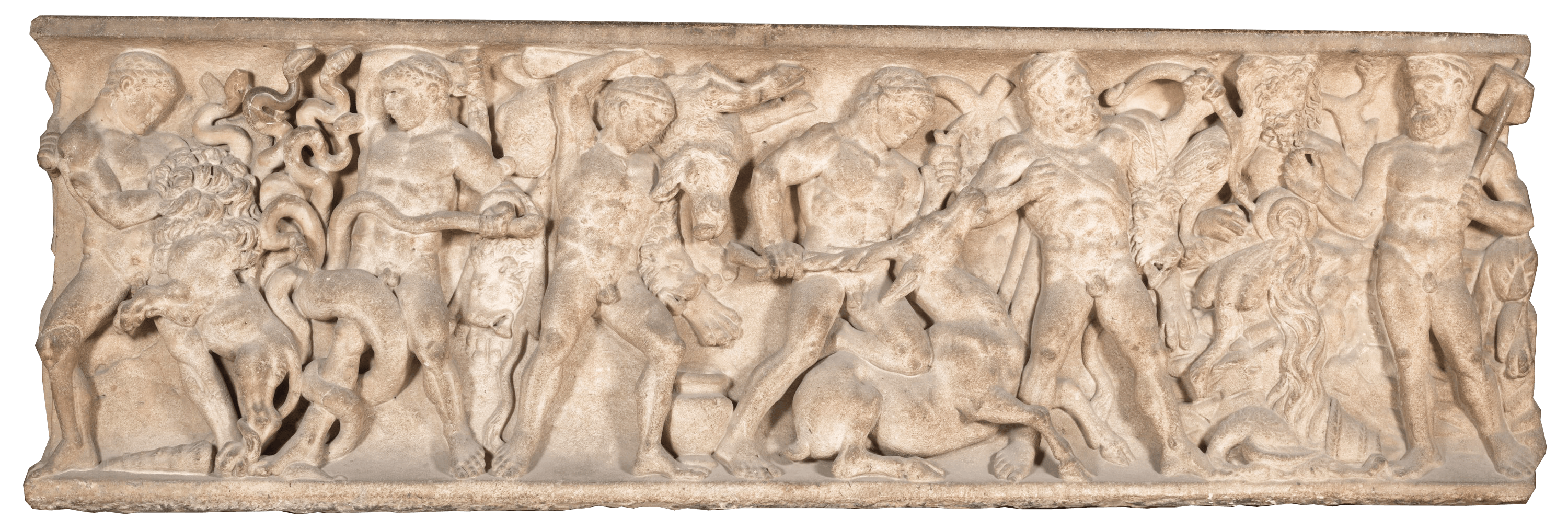Sarcophagus depicting the labours of Hercules
Roman art
The word “sarcophagus” comes from the Greek and literally means “devourer of flesh”. The object is an urn in the form of a parallelepiped; it is long, narrow and often decorated with images of myths, legends and heroic stories which were particularly beloved of the deceased. Carved in stone or sometimes in marble, this grandiose type of burial urn became widely used in Italy from the early 2nd century A. D., when inhumation (i.e. burial of the whole body in the ground, and sometimes in a box), gradually began to take the place of cremation. In this sarcophagus, the choice of the deceased fell to a famous myth, the Labours of Hercules. The tale starts on the left side, where the hero is depicted as a beardless youth, and continues on the right, where he appears adult and with beard. On the front, Eurystheus, King of the Mycenae, gives the first six labours to Hercules. Proceeding from the left, a young Hercules fights against the Nemean lion, the Lernean Hydra, the Erymanthean Boar, the Hind of Cerynea; little more than halfway along the slab, the hero is shown - older this time - while he kills the Stymphalian Birds and cleans out the stalls of King Augeus. The sarcophagus has no lid, which is where the missing episodes would have been seen. Scholars consider these figures to be an auspice for the deceased, a wish for access to eternal life after the toils of the earthly one, in the same way as Hercules, after his labours, was welcomed among the Gods on Olympus. It is believed that the sarcophagus came from Rome because that is where it was seen and recorded in the mid-18th century. A drawing depicts it in Palazzo Niccolini, the collections of which - including this piece - were brought to the Uffizi in 1824. From a stylistic viewpoint, some of the features, such as little evidence that a drill was used and the general lack of depth, place the sarcophagus in the early Antonine age.
P. Bocci Pacini, Le statue classiche di Francesco I de Medici nel giardino di Pratolino, Rivista dell'Istituto Nazionale di Archeologia e Storia dell'Arte, VIII-IX, 1985-1986, pp. 151-203, in particolare pp. 183-184, fig. 28.
